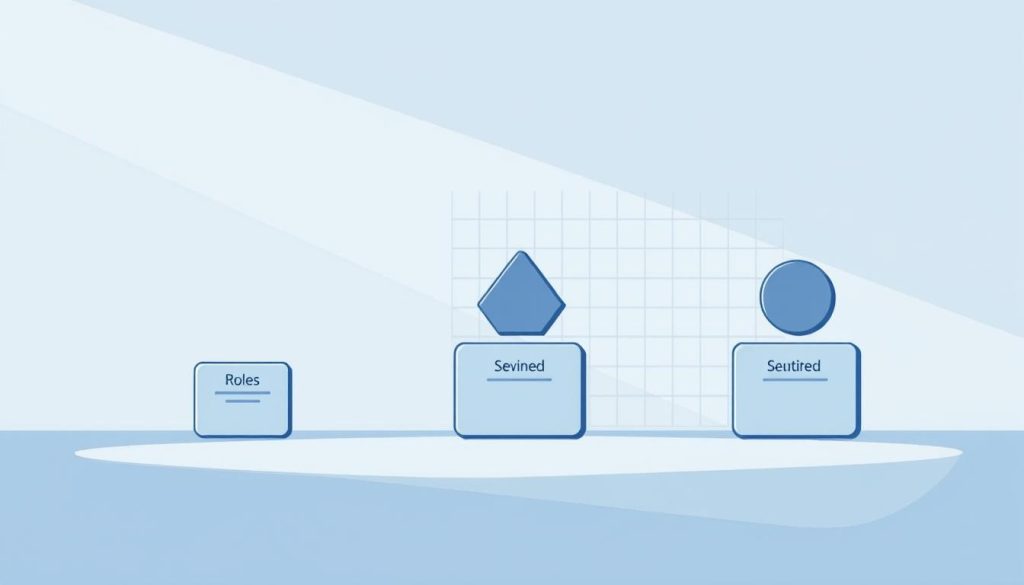What if the secret to thriving as a freelancer isn’t working harder—but working smarter through strategic alliances? For independent professionals facing unpredictable income and isolation, collaborative partnerships offer a game-changing path to stability without sacrificing autonomy.
These agreements go beyond basic client relationships. They create frameworks where professionals share skills, tools, and opportunities with aligned organizations. Imagine having consistent projects while keeping control over your schedule and creative process.
Modern freelancers increasingly use this model to build safety nets. Shared goals replace transactional work. Knowledge flows both ways. Resources expand without overhead costs. The result? Professionals gain predictability while maintaining their independence.
Table of Contents
Key Takeaways
- Strategic alliances provide steady work opportunities while preserving flexibility
- Shared expertise creates mutual growth for freelancers and organizations
- Ongoing relationships replace one-time gigs for lasting career security
- Resource pooling reduces financial risks for independent professionals
- Clear frameworks ensure both parties benefit equally from partnerships
This guide reveals practical steps to identify partners who align with your goals. You’ll learn how to structure agreements that deliver stability today while building opportunities for tomorrow.
Understanding Collaborative Partnerships
Transform your freelance career through alliances that amplify strengths while protecting independence. These connections differ from temporary gigs by building reciprocal value streams. Let’s explore how structured cooperation creates stability without compromising flexibility.
What Makes Alliances Work
Strategic alliances merge complementary skills across industries. A graphic designer might team with a marketing agency, combining visual expertise with client networks. This strategic alliance framework turns isolated professionals into resource-rich teams.
| Aspect | Transactional Model | Strategic Alliance |
|---|---|---|
| Duration | Single project | Ongoing engagement |
| Value Exchange | Payment for service | Shared growth opportunities |
| Growth Potential | Limited | Exponential |
| Risk Distribution | Freelancer bears most | Balanced responsibility |
The Balance of Shared Success
Effective alliances require measurable give-and-take. A web developer contributes technical skills while receiving steady projects from a software firm. Both track progress through agreed metrics like project completion rates or client satisfaction scores.
These relationships thrive when parties regularly assess contributions. Quarterly reviews help adjust resource sharing and maintain alignment with evolving business goals. Remember: lasting alliances depend on mutual adaptation, not rigid contracts.
Assessing the Need for Partnership in Freelancing
Smart freelancers don’t jump into alliances blindly—they measure needs first. Before seeking external support, conduct a clear-eyed review of your business gaps and growth potential. This systematic process reveals whether collaboration strengthens your practice or distracts from core goals.
Evaluating the Added Value of Collaboration
Ask: Does this alliance solve persistent challenges? A social media manager might partner with a copywriter to offer full-service packages. Such collaboration brings shared clients and complementary services without doubling workloads.
Effective partnerships show measurable returns. Track potential benefits like expanded networks, skill development, or access to premium tools. If a connection only addresses temporary needs, consider independent solutions instead.
Identifying Gaps and Support Requirements
Map your weaknesses honestly. Do you lack technical skills? Client referrals? Administrative bandwidth? Strategic alliances excel when filling specific voids:
- Missing expertise that clients expect
- Limited capacity during peak seasons
- No access to niche markets
Prioritize partnerships offering resources you can’t easily develop alone. A translator might team with a localization agency to gain industry-specific terminology and client pipelines. Regular check-ins ensure the arrangement adapts to changing needs.
Remember: Lasting partnerships require mutual investment. Use quarterly reviews to confirm alignment and adjust shared goals. This disciplined approach builds stability through purposeful working relationships.
Setting Clear Objectives and Goals
Successful alliances begin with precise roadmaps. Define what stability means for your freelance practice and how a partner contributes to that vision. This alignment turns vague hopes into actionable plans.
From Vision to Action
Start by mapping current capabilities against desired outcomes. A content creator might measure their existing client retention rate, then set a 30% growth target through agency collaborations. Document these baselines using tools like strategic planning guides for accuracy.
| Traditional Goals | SMART+C Framework |
|---|---|
| « Increase projects » | « Secure 5 retainer contracts by Q3 » |
| Vague timelines | Quarterly milestones with progress checks |
| Single-party focus | Shared KPIs like joint client satisfaction scores |
| Static targets | Challenges requiring skill development |
Building Measurable Progress
Break large objectives into weekly tasks. For example:
- Month 1: Define partnership metrics
- Month 2: Establish communication protocols
- Month 3: Launch pilot project
Review goals every 90 days. Adjust targets if market conditions shift or new opportunities emerge. This process keeps alliances dynamic while maintaining focus on core stability objectives.
Defining Roles and Responsibilities

Clear role definitions transform temporary teamwork into lasting professional alliances. When freelancers formalize expectations early, they build trust while protecting their autonomy. This process turns vague hopes into concrete working arrangements that benefit all participants.
Effective management starts with written agreements. Document who handles client communication, quality control, and deadline tracking. For example:
| Solo Freelancer | Partnered Roles |
|---|---|
| Handles all project aspects | Divides tasks by expertise |
| Self-managed deadlines | Shared progress tracking |
| Full profit retention | Revenue split per contribution |
Clarifying Each Partner’s Contributions
Create role descriptions specifying deliverables and decision-making power. A graphic designer might handle visual assets while their developer partner manages technical implementation. Both agree on revision limits and approval processes upfront.
Designate accountability champions in each organization. These contacts resolve conflicts and ensure tasks stay on track. Weekly check-ins help address issues before they escalate.
Use templates to document responsibilities that evolve with projects. Include sections for:
- Primary contact points
- Skill-specific duties
- Performance measurement criteria
Finalize agreements only after all parties confirm understanding. This prevents mismatched expectations and builds foundations for adaptable, long-term arrangements.
Building Trust Through Effective Communication
Strong professional alliances rely on more than contracts—they demand clarity in every conversation. Establishing structured communication channels prevents misunderstandings while fostering mutual respect between partners.
Developing Open Dialogue Strategies
Start by defining your communication blueprint. Assign a primary contact from each team to handle updates and feedback. Weekly video calls and shared dashboards work well for tracking progress. Monthly strategy sessions help align long-term goals.
Create response-time agreements. For example: urgent requests within 4 hours, routine updates within 24 hours. This prevents delays while respecting schedules. Use tools like encrypted messaging apps for sensitive information exchange.
| Traditional Communication | Structured Framework |
|---|---|
| Irregular check-ins | Scheduled updates |
| Single-channel use | Dedicated platforms per topic |
| Vague accountability | Assigned responsibility matrix |
| Reactive problem-solving | Quarterly risk assessments |
Maintaining Transparency in Processes
Share decision-making criteria openly. When partners understand how choices get made, trust grows naturally. Document all changes to workflows using version-controlled files accessible to both parties.
Implement a three-step approval process for critical decisions: proposal → impact analysis → final review. This structured approach reduces conflicts while keeping collaboration efficient. Regular audits ensure compliance with agreed standards.
For complex projects, consider managing client relationships through shared CRM access. Real-time visibility into client interactions prevents duplication of efforts and strengthens team alignment.
Establishing a Partnership Agreement and Structure

The foundation of successful alliances lies in documentation that protects while enabling growth. Formal agreements turn handshake deals into resilient frameworks where freelancers maintain flexibility with built-in safeguards.
Creating Formal Written Agreements
Choose agreement types based on project complexity and duration. Simple retainer work might use a Letter of Agreement, while multi-phase projects often require detailed Memorandums of Understanding (MOUs).
| Agreement Type | Best For | Key Features | Flexibility |
|---|---|---|---|
| Letter of Agreement | Short-term projects | Basic scope & payment terms | High |
| Service Collaboration | Ongoing engagements | IP ownership clauses | Moderate |
| Memorandum (MOU) | Strategic alliances | Governance procedures | Low |
Include these non-negotiable elements:
- Intellectual property arrangements
- Termination conditions
- Dispute resolution steps
Outlining Governance Procedures
Effective management requires clear decision-making protocols. Establish:
- Quarterly performance reviews
- Voting rights for major changes
- Escalation paths for conflicts
Build adjustment mechanisms into your contracts. A clause allowing terms renegotiation after 6 months keeps arrangements aligned with evolving business needs. Track metrics like milestone completion rates to objectively assess progress.
Leveraging Resources and Support Systems
Unlocking hidden assets forms the backbone of sustainable freelance alliances. By strategically mapping available resources, independent professionals gain access to tools and networks that multiply their capabilities without increasing individual workloads.
Identifying Shared Resources and Skills
Begin by auditing what you and potential allies bring to the table. Tangible assets like specialized software or shared office space reduce overhead costs. Intangible strengths—industry connections or niche expertise—create unique value propositions clients can’t find elsewhere.
| Resource Type | Examples | Shared Benefits |
|---|---|---|
| Tangible | Project management tools Co-working spaces |
Cost reduction Infrastructure access |
| Intangible | Client networks Brand reputation |
Market expansion Trust acceleration |
Effective alliances require specific competencies. Develop these three core skills:
- Technical: Mastery of collaborative platforms
- Financial: Budget allocation for joint projects
- Interpersonal: Conflict resolution techniques
Create resource-sharing agreements with clear usage terms. For example: split software subscription costs proportionally to usage rates. Track contributions through shared dashboards to maintain transparency.
Access exclusive support systems through your network. Many professional associations offer partner discounts on training programs or mentorship opportunities. Document all shared assets in centralized repositories for easy reference and accountability.
Implementing Collaborative Partnerships for Enhanced Stability
Turning theory into action requires adapting proven methods to your unique freelance practice. Let’s explore how professionals across industries convert strategic connections into reliable income streams while maintaining creative control.
Applying Best Practices in Real-World Scenarios
Healthcare systems and urban planners demonstrate cross-sector success. Freelancers can mirror this approach by aligning with organizations needing specialized skills. A copywriter might implement activities like co-branded webinars with a translation agency, sharing audiences while splitting costs.
Track progress using shared dashboards. Weekly check-ins help adjust workflows, while quarterly reviews assess mutual benefits. This mirrors federal-state coordination models where multiple stakeholders manage complex continuous learning systems without centralized control.
Integrating Feedback for Ongoing Improvement
Treat every project as a learning opportunity. After delivering a client report, ask partners: “What worked? Where can we streamline?” Document insights in shared knowledge bases for future reference.
Successful implementation balances structure with adaptability. Set clear metrics but remain open to evolving strategies. Like transportation networks adjusting routes based on usage data, freelancers refine their practices using real-world feedback loops.
FAQ
Why do freelancers need formal agreements when working with others?
Written agreements clarify expectations, protect all parties, and provide legal clarity. They outline deliverables, timelines, payment terms, and conflict resolution processes to prevent misunderstandings.
How can independent professionals build trust in team arrangements?
Prioritize transparent communication through regular check-ins and shared progress updates. Establish clear accountability measures and respect confidentiality agreements to foster reliability.
What strategies help define roles in joint projects?
Start by mapping each participant’s strengths and availability. Use tools like RACI matrices (Responsible, Accountable, Consulted, Informed) to assign tasks and decision-making authority objectively.
Which resources are most valuable in shared work models?
Leverage combined expertise, niche tools, and industry networks. Cloud-based project management platforms and skill-sharing sessions often amplify efficiency in cross-functional teams.
How do you measure the success of cooperative work efforts?
Track progress using SMART metrics aligned with initial goals—like project completion rates, client satisfaction scores, or revenue growth. Schedule quarterly reviews to assess adaptations.
What steps resolve conflicts in professional alliances?
Address issues early through mediated discussions focused on solutions, not blame. Refer to partnership agreements for predefined escalation paths, and prioritize preserving long-term relationships.
Can short-term collaborations transition into lasting partnerships?
Yes, if both parties consistently deliver value and align strategically. Document lessons learned, formalize recurring processes, and co-develop growth plans to scale successful pilot projects.





